#louis-philippe de ségur
Explore tagged Tumblr posts
Text

*rises from the ashes* I LIVEEEE
this was a commission for @nerenight, still involving 18th century lore i know little to nothing about (absurd!!!)
close ups bc they turned out pretty:

#my art#artists on tumblr#18th century#featuring (from left to right):#louis marie de noailles#marquis de lafayette#(i ain't writing his whole name)#louis philippe comte de ségur
412 notes
·
View notes
Photo
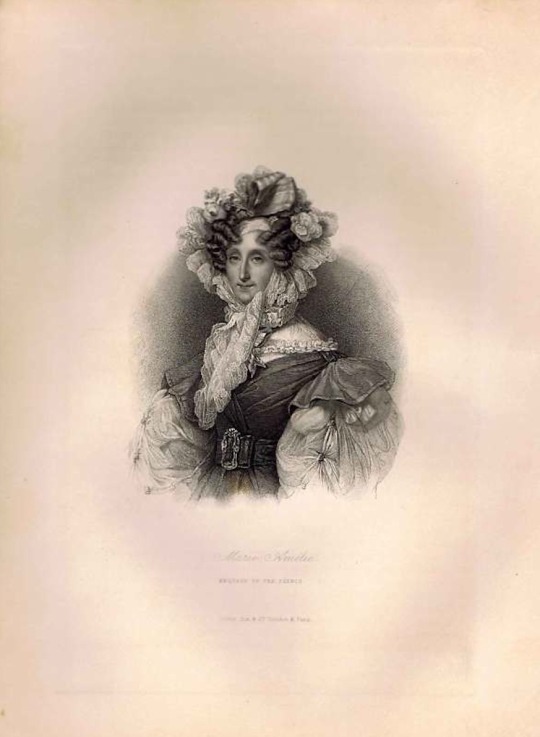
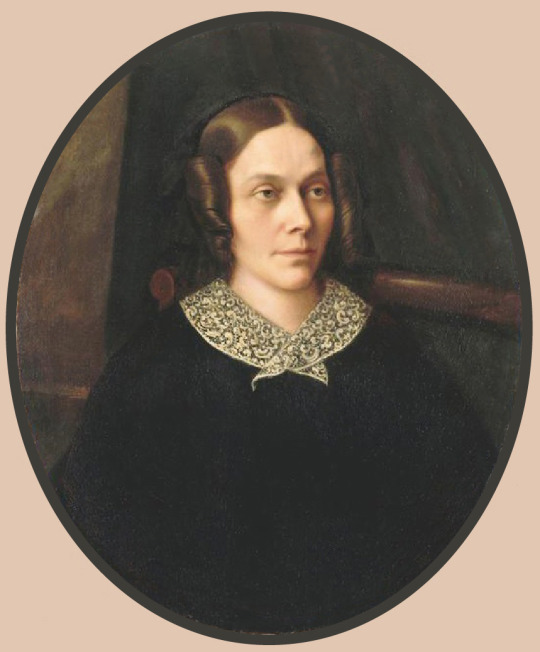


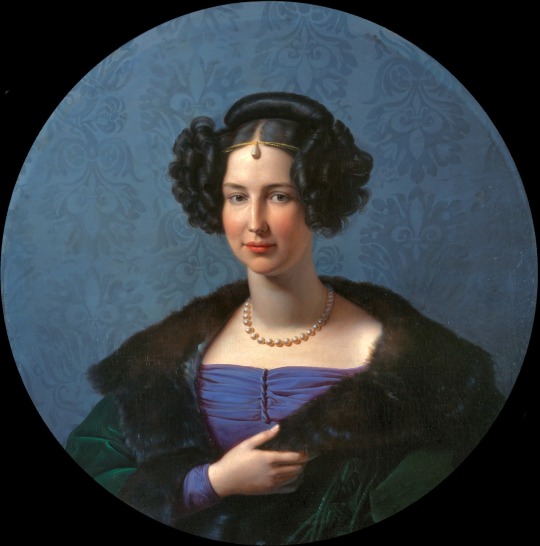
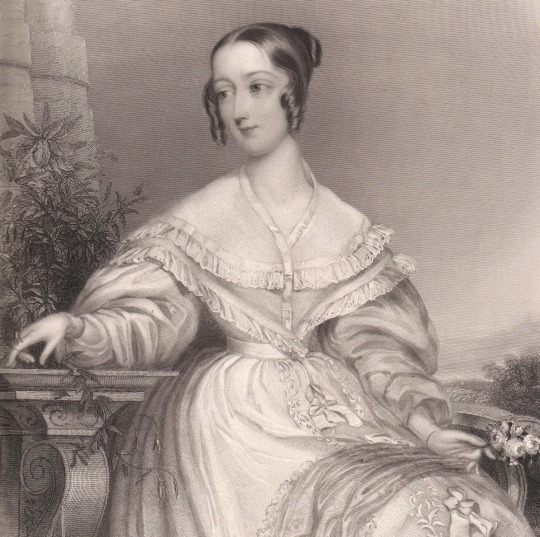




Some time around 1840 -
Top row ca. 1840 Marie-Amélie black and white print. From eBay 873X1191. This looks more ca. 1830.
Second row left ca. 1840 Sophie Rostopchine, Comtesse de Ségur by ? (Versailles) Photo - Gérard Blot. Probably from Réunion des musées nationaux; fixed spots w Pshop 859X1037.
Second row right ca. 1840 Sophie Rostopchine by Louis Gaston de Ségur (probably at the Musée de la comtesse de Ségur - Aube (Orne), Normandie, France). From enmargedutemps.wordpress.com/2014/03/17/comtesse-de-segur/; removed spots and flaws with Photoshop 643X83.
Third row ca. 1840 Jane Stirling with young Fanny Elgin (later Lady Bruce) by Achille Devéria. From Wikimedia 1115X1500.
Fourth row left ca. 1840 Wilhelmine Luise Prinzessin von Preussen, née Anhalt-Bernburg by Friedrich Wilhelm Schadow (Georgium - Dessau-Roßlau, Sachsen-Anhalt, Germany). From tuttartpitturasculturapoesiamusica.com/2017/11/Wilhelm-von-Schadow.html 1582X1600 @72 365k.
Fourth row right ca. 1840 Lady Flora Hastings possibly by Edward Finden after E. Hawkins; portrait from the book Hastings of Hastings. From Wikimedia, attributions from British Museum Web site 2275X2263.
Fifth row ca. 1840 Unknown Countess by Moritz Michael Daffinger (location ?). From fotki.yandex.ru/users/stepanov-el/view/543420/?page=3; fixed spots w Pshop 831X1085 @72 333kj.
Sixth row left ca. 1840-1841 Ellen (‘Nelly’) Power by Edwin Landseer (Wallace Collection - London UK) From the museum's Web site 566X769.
Sixth row right ca. 1840 Therese Countess Sternberg, née Stadion by Alois von Anreiter (Bomann Museum, Tansey Collection of Miniatures - Celle, Niedersachsen Germany). Probably from their Web site 640X807.
Seventh row ca. 1840 Rainha Maria II of Portugal by John Simpson (Museu Imperial - Petropolis, Rio de Janeiro, Brazil). From Wikimedia; removed spots in background with Photoshop 1047X1337.
#1840s fashion#Romantic era fashion#Biedermeier fashion#early Victorian fashion#Louis-Philippe fashion#Marie-Amélie#Sophie Rostopchine#Gérard Blot#Louis Gaston de Ségur#side curl coiffure#bun#straight hair#lace collar#Jane Stirling#Achille Devéria#V neckline#lace bertha#Wilhelmine Luise Hohenzollern#Friedrich Wilhelm Schadow#pleated bodice#ferroniere#fur-trimmed coat#Flora Hastings#Edward Finden#E. Hawkins#scoop neckline#Moritz Michael Daffinger#off shoulder V neckline#Ellen (‘Nelly’) Power#Edwin Landseer
14 notes
·
View notes
Note
I once read that Napoleon did not allow anyone to know him intimately. Even for those who were around him all the time.
Do you think this applied to Duroc? Why or why not?
That's an interesting question--I suppose it depends on how you want to define 'intimately'!
Certainly the nature of Duroc's job meant that he spent a great deal of time with Napoleon, and was heavily involved in managing his day-to-day life. I've always thought that Philip Mansel's description (in The Court of France 1789-1830 (1988)) is a good succinct summary: in his view, Duroc "organized Napoleon's life, and was one of the most important people in it". Of course there were a huge number of people involved in keeping the imperial household--and the Empire itself--running, many of whom, as you say, were around him all the time. However, Duroc's involvement in Napoleon's life went well beyond his official roles, most notable with his oft-remarked ability to influence Napoleon's opinions and decisions (Louis-François-Joseph de Bausset, who as one of the Prefects of the Palace worked closely with both Duroc and Napoleon, described Duroc as Napoleon's conscience). And he was tasked with activities that were definitely not part of his job description and touched on a more private side of Napoleon's life: carrying notes to Marie Walewska, for example, or retrieving letters Napoleon wrote to another mistress. Bausset claimed that "Napoleon had no secrets from [Duroc], while he had them from everyone else, even the prince of Neufchâtel [Berthier]".
Philippe-Paul de Ségur, who worked for Duroc in the Maison impériale, described him in his memoirs (Histoire et mémoires, 1873) as:
"Napoleon's most intimate confidant, his most devoted servant, his firmest friend; they were so closely associated by nature, by habit, by everything, that we no longer imagined that they could live apart: it appeared to us that fate couldn't tear one away without mutilating the other!"
And while Ségur's description of how inseparable they were is particularly vivid--and serving a literary purpose, as it leads right into his account of Duroc's death--he's far from the only person to remark on their closeness. So by dint of both the nature of the Grand Marshal's job and the trust that Napoleon had in him specifically, he did have an unusually intimate position in Napoleon's life.
This also gets into the question of where Napoleon Bonaparte, the person, stops, and The Emperor Napoleon begins. Emmanuel de Las Cases claimed that "it was to the private man above all that [Duroc] was devoted, far more than the monarch". (And speaking of Las Cases, he also wrote that "the Emperor told me that Duroc alone had his intimacy and possessed his entire confidence"--though as with everything Napoleon said on Saint Helena, when his myth-making was in full swing, that should be taken with a grain of salt.) Writing to Marie Louise after Duroc's death, Napoleon remarked that "he had been my friend for twenty years"--their relationship had begun well before Napoleon seized power. So there's that level of intimacy as well: recognizing and loving the man behind the complicated performance and power of the Emperor.
17 notes
·
View notes
Text

"The door of the monument was open, Napoléon paused at the entrance in a grave and respectful attitude. He gazed into the shadow enclosing the hero's [Frederick the Great] ashes, and stood thus for nearly ten minutes motionless, silent, as if buried in deep thought. There were five or six of us with him: Duroc, Caulaincourt, an aide-de-camp and I. We gazed at this solemn and extraordinary scene, imagining the two great men face to face, identifying ourselves with the thoughts we ascribed to our Emperor before that other genius whose glory survived the overthrow of his work, who was as great in extreme adversity as in success."
(General Ségur)
#Napoleon#Napoleon Bonaparte#frederick the great#Géraud Duroc#Duroc#Armand-Augustin-Louis Caulaincourt#Caulaincourt#Philippe Paul comte de Ségur#Ségur#Napoleonic era#history#french history#napoleonic wars
36 notes
·
View notes
Text

Portrait of Comtesse Jean-Henri-Louis Greffulhe, née Marie-Françoise-Célestine de Vintimille du Luc, later Comtesse Philippe-Paul de Ségur in a landscape by Horace Vernet , 1825
92 notes
·
View notes
Note
Hello dear,
I have a question that I hope isn’t too off topic or has already been asked.
I am currently reading through Adrienne de Lafayette’s bio by André Maurois and he keeps referencing the Marquis’ friend Ségur. I recall this name from other Lafayette biographies I have read but there I encountered the same problem. Does he have a title or a first name? It appears his father was a well respected general? But I can’t seem to piece together who that family is or what their standing was. I would love to know more about him, maybe dig into some correspondence as that is my one true vice. 😆 I just thought I would ask the Oracle since I’m stumped. 🤓😁
Well my dear @aconflagrationofmyown, I think I can help you with that. :-)
Yes, this mysterious Ségur has a name and a title. The “Ségur in question” was Louis Phlippe, comte de Ségur, born on December 10, 1753 in Paris and died on August 27, 1830 in Paris. He published his Memoirs and they are really worthwhile to read - interesting stories about a young La Fayette, insights into the inner circles of the French court at the time and of course into Ségur’s personal life. Here is his description of his relationship with La Fayette:
The three Frenchmen, distinguished by their rank at court, who first offered their military services to the Americans , were the Marquis de La Fayette, the Viscount de Noailles, and myself. We had long been intimate friends, and our connexion, which was strengthened by a great conformity of opinions, was soon after confirmed by the ties of blood.: La Fayette and the Viscount de Noailles had married two daughters of the Duke de Noailles, then bearing the title of Duke d'Ayen; their mother, the Dutchess d’Ayen, was the daughter, by his first marriage, of M. d'Aguesseau, Counsellor of State; and son of the Chancellor of that name M. d'Agur esseau had, by a second wife, twenty years after, several children, one of whom was M. d'Aguesseau, now a peer of France, a daughter, married to M. de Saron, first President of the Parliament of Paris, and another daughter, to whom I was united in the spring of 1777; so that, by this alliance, I became the uncle of my two friends.
Comte de Ségur, Memoirs and Recollections of the Count Segur, Ambassador from France to the Courts of Russia and Prussia, &c. &c., Wells and Lilly, Boston, 1825, p. 84.
Ségur’s descriptions of family relations is as confusing as it could possibly be and therefor once more in simple terms. La Fayette’s wife Adrienne had an aunt, her mother’s younger sister Antoinette-Elizabeth-Marie d’Aguesseau. This sister married Louis Philippe, comte de Ségur in 1777 in Paris and the couple had four children, three sons and one daughter. Ségur therefor was La Fayette’s uncle by marriage. Here is an example of how La Fayette described Ségur and their relationship. He wrote to George Washington on April 12, 1782:
This letter, My Dear General, Is Intrusted to Count de Segur, the Eldest Son of the Marquis de Segur Minister of State and of the War Departement Which in France Has a Great Importance—Count de Segur Was Soon Going to Have a Regiment, But He Prefers Serving in America, and Under Your orders—He is one of the Most Amiable, Sensible, and Good Natured Men I Ever Saw—He is My Very Intimate friend—I Recommend Him to You, My dear General, and through You to Every Body in America Particularly in the Army.
“To George Washington from Marie-Joseph-Paul-Yves-Roch-Gilbert du Motier, marquis de Lafayette, 12 April 1782,” Founders Online, National Archives, [This is an Early Access document from The Papers of George Washington. It is not an authoritative final version.] (05/20/2022)
You said you have already done some digging on your own and I assume you came across Ségur’s Memoirs. I include some links just in case and for everybody else who might be interested. Ségur’s memoirs are normally split into three volumes.
Internet Archive, French original: Volume One - Volume Two - Volume Three
Internet Archive, English Translation: Volume One (they do not have any more volumes in English)
Google Books, English Translation: Volume One - Volume Two - Volume Three
Since Ségur also worked as a diplomat and historian, he authored quite a number of works. Here is a little overview of all of his freely accessible books at the Internet Archive and via Google Books.
His second-oldest son, Phillipe-Paul also wrote his memoirs: An aide-de-camp of Napoleon. Memoirs of General Count de Ségur, of the French academy, 1800-1812.
Ségur hailed from a very well situated family. His father was Philippe Henri, Marquis de Ségur, decorated general and later Secretary of State for War during the American Revolution. He was the grand-son of Philippe II, Duke of Orléans, regent of the Kingdome of France, by Orléans’ illegitimate daughter Philippe Angélique de Froissy. Ségur also had a younger brother, Joseph Alexandre Pierre, vicomte de Ségur. It is rumoured that Joseph Alexandre Pierre was not the son of Phillippe Henri but had actually been fathered by his “fathers” friend, Pierre Victor, baron de Besenval de Brünstatt. To my knowledge that had never been officially proven though.
The État civil reconstitué (XVIe-1859) should technically have Ségur’s Acte de Décès but I could not find it at first glance. I did find however the corresponding Fichier in the État civil reconstitué and maybe that is of interest for you as well. It is quite interesting to observe that Ségur’s last name is given as a combination of his and his wife’s name.

Paris Archives, Fichiers de l'état civil reconstitué, Cote V3E/D 1356, p. 21. (05/20/2022)
You also mentioned that you were interested in correspondences - in fact, you said that they are your one true vice and I can absolutely understand that. Under the cut (as not to bother everybody who is just casually scrolling) I include the one fully transcribed letter by Ségur that I have. There are also a couple of letters where I only have the dates and short summaries - just let me know if you are interested in them as well.
I hope you have/had a beautiful day!
The comte de Ségur to the Marquis de La Fayette
Rochefort, July 7, 1782
I received, my dear Lafayette, your friendly letter, and I was extremely touched. I love you madly and I cannot console myself that I am not traveling with you. You are going to play a very honorable role, and one that is very difficult to play. You will have to reconcile the French and American characters, deal tactfully with opposing interests, and fill the measure of your glory to overflowing by adding the olive branch to the laurel leaves. And you will even have to act against your own inclination by helping to put a definite end to the horrible scourge to which you owe your fame. I am very sorry not to be able to talk with you freely at the moment I most desire it. But letters are not safe enough, and I haven't anything to tell you but things I would not want to be read. I foresee that you are going to be more revolted than ever at English arrogance, stupid Spanish vanity, French inconsistency, and despotic ignorance. You will see that the cabinet tries one's patience as much as a battlefield, and that as many stupid things are done in a negotiation as in a campaign. You will see especially how essentials are sacrificed to form, and you will say more than once, “If chance had not made me one of the principal actors, I should certainly not stay in the theater.” But the more obstacles you encounter, the more merit you will gain. How could you not succeed in all you desire, for you have genius and good fortune. To have that is to have half again as much as it takes to be a great man. Farewell, my friend. I expect to leave the day after tomorrow, consoling myself rather philosophically for going two thousand leagues for nothing, but not consoling myself for not finding you in a place that I find full of your name and your deeds. I shall carry out all your commissions, and I shall point out the patriotic sacrifice you are making in temporarily exchanging your sword for a pen. I request that you love my wife, hug my children, take my place with my father, and join us as soon as you can to sound the charge or beat the farewell retreat.
Idzerda Stanley J. et al., editors, Lafayette in the Age of the American Revolution: Selected Letters and Papers, 1776–1790, Volume 5, January 4, 1782‑December 29, 1785, Cornell University Press, 1981, p. 51.
#ask me anything#aconflagrationofmyown#marquis de lafayette#la fayette#french history#american history#american revolution#french revolution#history#letter#george washington#comte de ségur#marquis de ségur#vicomte de ségur#1753#1777#1730#1782
19 notes
·
View notes
Text
Caroline Murat developed a special fascination for Mount Vesuvius and, when her health finally permitted her to begin exploring her new kingdom a little more, the ruins of Pompeii and Herculaneum. Early in 1809 she was able to witness a minor eruption (very minor—I have so far failed to find it listed on multiple lists of Vesuvius’ past eruptions). She was eager to describe it to one of her friends/regular correspondents, Louis Philippe, Count of Ségur (father of the author of the famous 1812 memoir). Here is the excerpt from her letter from 13 March 1809.
We had on the first days of the month a most interesting spectacle: Vesuvius finally presented us with an eruption. It was not very considerable, but it offered a magnificent sight, and it has almost entirely changed the interior of the crater; a second mouth opened very close to the first, and around each one stones and ashes have already formed mounds. The lava cools on the surface, offering, in the material, a kind of not very solid floor under which flows the torrent of fire which radiates at about fifteen fathoms, and goes towards the village of Torre del Greco. This bridge is frightening to cross: it is pierced with crevices, through which we can see the lava flowing with flames and suffocating exhalations. I wanted to see this eruption in all that it offers interesting, and I often regretted not having you near me; I am sure that you would have forgotten that pretty viewpoint that a small corner of the Elysée offered you, and that you so much liked to admire. But I do not know if your curiosity would not have been stopped a little by the risks it was necessary to run. I climbed high enough to overlook the two mouths and see the interior of the volcano, but I was forced to leave the place, and I had barely gotten far when a cloud of flaming stones came to cover it. From this danger I fell into another; It had been two minutes since I had crossed the bridge of lava under which the fire flows, when this crust burst with a crash into a great expanse, and left no passage. The torrent of lava was little more than twelve feet in length, and it appeared at night like a long ribbon of fire; it has flowed only over old lava, and it is believed that it will not cause any damage. It continues to flow, and it will soon be extinguished.
Translated from Lettres inédites de Caroline Murat reine de Naples, published by Albert Lumbroso in Revue Napoléonienne, Series IX, Vol. Jan-Jun 1912.
18 notes
·
View notes
Text
Louis Bacler d’Albe


Artist (he painted the portrait of Bonaparte) and topographer. From historyofwar.org:
General Louis-Albert-Ghislain Bacler d'Albe (1761-1824) was the head of Napoleon's topographical bureau from 1804 and one of his most important staff officers.
Bacler d'Albe was an artist before the outbreak of the French Revolutionary Wars. He joined the French Army in 1793, and was almost immediately employed in the topographical and geographical services.
Bacler d'Albe served in Italy in 1794-96, during Napoleon's first campaign in Italy. He then worked for Napoleon for most of the rest of the Revolutionary and Napoleonic Wars.
In September 1804 he became head of Napoleon's Topographical Department, with responsibility for producing and updating maps of any campaign area, complete with the positions of friendly and enemy troops. He also had to make sure that all the equipment Napoleon might require for map work were present each day, along with Napoleon's valued carnets, notebooks that contained details of every French and enemy unit. He was also often given the job of working out times and distances.
He became one of Napoleon's most trusted and valued subordinates, and on campaign was normally the first man Napoleon summoned in the morning, and the last at night. At first he worked alone, despite his heavy workload, but eventually he was given two assistants.
General Fain describes the two men crawling across the top of the map table to get closer to the fine details, sometimes bumping heads as they looked at the same information.
Although Napoleon depended heavily on his campaign headquarters and its small staff, he didn't promote or reward its members very well. Bacler d'Albe was made a baron in 1809, but he wasn't promoted to general of brigade until 1813, despite playing a key part in most of Napoleon's most famous campaigns.
Bacler d'Albe's oldest son Joseph-Albert served as an aide-de-camp to Philippe Ségur during the 1812 invasion of Russia.
Bacler d'Albe's career survived the fall of Napoleon. He was made director of the Dépot de la Guerre 1814 and served the Bourbons until his retirement in 1820.
This map says “residence of Buonaparte” and I can’t believe Bacler d’Albe wrote that on the original map (this was a lithograph or something).
#Bacler d'Albe#Napoleon's faithful lieutenants#topographer to Napoleon#people I'd never heard of#I think he invented the concept of the relief map
12 notes
·
View notes
Photo


Jacques-Louis David Le Sacre de Napoléon
The Coronation of Napoleon
Depicted people
Napoleon
Joséphine de Beauharnais
Letizia Ramallo
Louis Bonaparte
Joseph Buonaparte
Napoleon Charles Bonaparte
Elisa Bonaparte
Pauline Bonaparte
Caroline Bonaparte
Charles-François Lebrun, duc de Plaisance
Jean Jacques Régis de Cambacérès
Louis-Alexandre Berthier
Charles-Maurice de Talleyrand-Périgord
Joachim Murat
Pius VII
Jacques-Louis David
Hortense de Beauharnais
Julie Clary
Géraud Duroc
Catherine-Dominique de Pérignon
François Joseph Lefebvre
Jean-Andoche Junot
Auguste Laurent de Rémusat
François Christophe de Kellermann
Jean-Baptiste de Belloy
Louis-Philippe de Ségur
Émilie de Beauharnais
Adélaïde de La Rochefoucauld
Jean-Baptiste Bessières
Bon-Adrien Jeannot de Moncey
Jean-Mathieu-Philibert Sérurier
Louis-Auguste Juvénal des Ursins d'Harville
Martin-Roch-Xavier Estève
Carlo Francesco Maria Caselli
Raphaël de Monachis
Giovanni Battista Caprara Montecuccoli
Federico Carlos Gravina y Nápoli
Philipp von Cobenzl
John Armstrong
Department of Paintings of the Louvre
Room 702
https://commons.wikimedia.org/wiki/File:Jacques-Louis_David_Sacre.jpg
23 notes
·
View notes
Text
"Le grand défaut qui paraît inhérent à la nature humaine, c'est d'aimer ce qui est tranchant, de donner dans les extrêmes, de se plaire dans les excès, et de fuir cette modération et ce juste milieu où se trouvent cependant la vérité, la justice et la sagesse."
Louis-Philippe de Ségur
3 notes
·
View notes
Text
The Grand Master of Ceremonies, Louis-Philippe de Ségur, Comte of the Empire
THE GRAND MASTER OF CEREMONIES Louis-Philippe de Ségur, Comte of the Empire
The comte Louis-Philippe de Ségur was Grand Master of the Ceremonies of the Imperial Household from 1804 until the fall in 1815. This Grand Officer "performs two different kinds of functions: the ceremonies and the introduction of the Ambassadors...He writes and signs the protocol [and] dictates the costumes in which those invited must appear...The day of the ceremony, [he] makes sure that all the parts of the protocol are properly adhered to; during the ceremony, he stands in front, close to H.M." The Grand Master gives orders to the masters of Ceremonies, with the help of the assistants of Ceremonies and heralds, and he also relies on a dessinateur of Ceremonies (a position entrusted to the painter Jean-Baptiste Isabey, charged with giving shape to and decorating ceremonial spaces and the costumes) and a coach of Ceremonies.
Ségur was the son of Philippe Henri, marquis de Ségur, marshal of France and minister of war under Louis XVI. From the aristocracy of the Ancien Régime, he was well acquainted with the customs of the court at Versailles. It would be wrong, however, to see him only as an old courtier, concerned soley with preserving the conventions and details of etiquette from one regime to the next. Indeed, his fascinating career represents all of the rich intellectual and liberal identity of nobles in that generation of Frenchmen, born under Louis XV only to find themselves facing the civic and social challenges of the late eighteenth century. His presence at Napoleon's side takes on a particular importance.
A Freemason, in his youth he supported the independence of the United States and fought on American soil, returning in 1783 with the rank of colonel of dragoons. He was then sent by Louis XVI as ambassador to Russia (1784-89), where he earned the friendship of Catherine the Great. A believer in the Revolution, he was appointed ambassador to the Holy See, but the pope refused him entry into the Papal States. He received the same treatment by the king of Prussia, to whom a discredited France had sent him in January 1792. Returning to France, he retired to his estates in Chatenay, where he prudently remained during the most dangerous years of the Revolution. Bonaparte's rise to power won him over. A member of the Legislative Corps in 1801, and then a member of the Council of State, he was appointed Grand Master of Ceremonies with the advent of the Empire. Created a comte of the Empire in 1808, he joined the Senate in 1813. Ségur sided with Louis XVIII in 1814, and then went back to Napoleon during the Hundred Days, even offering to follow him into exile after Waterloo. In the end, he stayed in France. He fell from grace during the early years of the Restoration, but regained his seat in the Senate in 1819. He died in 1830, a few weeks after the liberal revolution to the July Monarchy.
Excited by the new ideas of his age, Ségur was a born historian who loved philosophy and literature and frequented the salons of Mme Du Deffand and Mme Geoffrin, meeting La Hapre, Marmontel and Voltaire. He produced numerous works of history and political science, as well as plays, short stories and songs, and his admirable Mémories, on the first part of his life up to the Revolution, all of which are still extant. This dense text reveals the depth of his thinking and his strong belief in the Enlightenment. He was elected to the Académie francaise in 1803. His literary output was interrupted under the Empire, but he took it up again under the Restoration, notably publishing Abrégé de l'histoire universelle in forty four volumes (1817), a Histoire de France in nine volumes (1824) and Histoire des Juifs (1827). As an enlightened historian, he was admirably suited to carry out the functions of a Grand Master of Ceremonies, for which historical research was often necessary. In order to reconstitute a coherent and relevant etiquette for the court, he delved into the archives of the royal palace and memories of the courts of Europe.
The half-length portrait of Ségur from the Chateau de Versailles is a work that requires careful study. It is important to note that the original commissioned by the Imperial Household for the Gallery of Grand Officers, was in fact a full-length portrait. Is this a copy, a replica or actually the original cut down? The original was commissioned from Marie-Guillemine Benoist and executed during the year 1806. It was in the Tuileries, hanging in the Gallery of Diana in August 1807, and then at Compiegne, in the Salon of Ushers in May 1808. On February 13, 1814, it was sent to the Louvre, like the other paintings. Was it then, under the Restoration, given to the sitter's family, as was the case with most of the other portraits of the Grand Officers? This is probable, and would support the hypothesis that it was this canvas, as it has been kept at Versailles since 1924, given by the Ségur family.
The Grand Master is standing in front of a heavy curtain that offers a narrow glimpse of a distant horizon. He appears to be holding his ceremonial staff, which tempts us to compare the composition to the portrait of Duroc, Grand Marshal of the Palace, by Gros.
It is no great surprise that it was this portrait-of himself-that Ségur had copied by Isabey, his artist of Ceremonies, to represent the figure of a Grand Officer of the Household in the Livre du Sacre, a publication he authored. In 1810, Goubaud, in his turn, made use of it to depict Ségur carrying out his duties in Napoleon Recieving the Delegation from the Roman Senate in the Throne Room of the Tuileries.
Napoleon, The Imperial Household, Sylvain Cordier, Montreal Museum of the Arts, page 48
Ségur Portrait: Artist Unknown, possible Benoist.

Goubaud’s, Napoleon Receiving the Delegation of the Roman Senate in the Throne Room at the Tuileries

#napoleon#bonaparte#Napoleon Bonaparte#Emperor Napoleon#Emperor Napoleon Ier#Emperor Napoleon I#Napoleon I#Napoleon Ier#imperial household#book exerpt#First Empire#Ségur#Segur#Louis Philippe Segur#Louis Philippe Ségur#Grand Master of Ceremonies
7 notes
·
View notes
Text
Bai Qu: Hundreds of Melodies (Nintendo Switch) - Le test
Bai Qu: Hundreds of Melodies (Nintendo Switch) – Le test
« Le meilleur soutien dans les heures difficiles est la main d’un ami. » Citation de Louis-Philippe de Ségur ; L’école de l’adversité (1816) (more…)

View On WordPress
0 notes
Photo


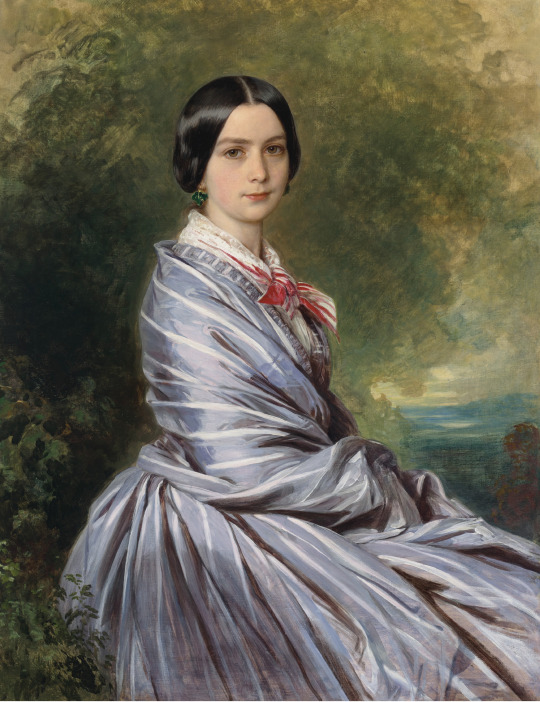


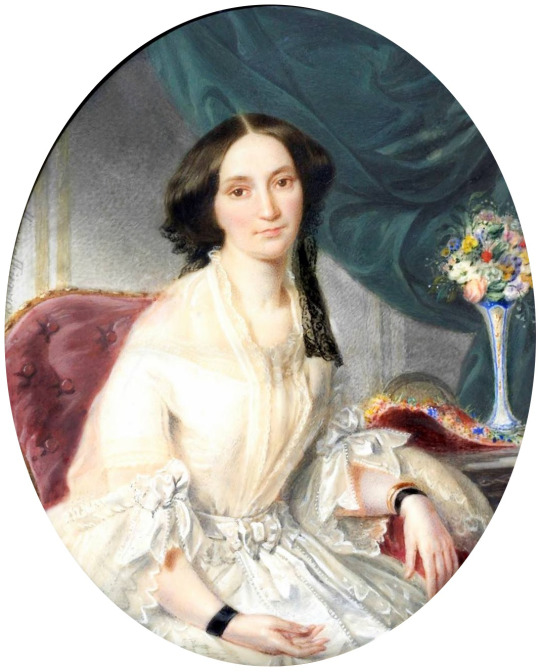




1840s fashion:
Top row left: 1840-1848 Maria Mathilda Moll, née Sterkey, by Olof Södermark (auctioned by Stockholms Auktionsverk). From auktionsverket.com-auction-fine-arts-2012-12-04-2338-olof-sodermark-romersk-flicka-vid-balustrad- 1641X2161 @72 6.7Mp.
Top row right: 1846 Noble Lady by Ferdinand Georg Waldmüller (auctioned by Christie's). From mutualart.com/Artwork/Portrait-of-a-Lady/8A0F49E7DBD87528# 1910X2388 @144 4.1Mp.
Second row left: 1848 Augusta Wichrow by Franz Xaver Winterhalter (Christie's - 13Oct21 auction Lot 11) 3131X4073 @150 4.9Mj.
Second row right: 1840 Elena Pavlovna by Vladimir Hau (location ?). posted to the Alexander Palace Time Machine Discussion Forum by Lisa on 14 February 2006 1106X1276 @72 414kj.
Third row left: 1840 Feodora, Princess of Hohenlohe-Langenburg with her daughter Princess Adelaide by Sir George Hayter (Royal Collection). From Wikimeia; removed spots with Photoshop 1616X1969 @300 630kj.
Third rów right: 1840 Katarzyna Potocka z Branickich by Stanisław Marszałkiewicz (location ?). From Wikimedia; removed spots with Photoshop 1068X1329 @96 386kj.
Fourth row left: 1840 Königin Therese von Bayern by Franz Xaver Nachtmann (location ?). From Wikimedia 1217X1500 @72 470kj. There are too many spots to fix.
Fourth row right: 1840 Louise Marie Therese Charlotte Isabelle of France (1812-1850), daughter of Louis Philippe I of France and Maria Amalia of Naples and Sicily by Magdalena Dalton (Royal Collection) From pinterest.com/AlexyMet/ritratti-aristocratici-eleganti/.
Fifth row left: 1840 La comtesse de Ségur by ? (Château de Versailles - Versailles, Île-de-France, France). From france-pittoresque.com/spip; enlarged by half.php?article13161; removed more obvious spots w Pshop 752X932 @96 124k.
Fifth row right: 1840 Maria Anna von Savoyen by Johann Stadler (Albertina - Wien, Austria). From Wikimedia 1824X2741 @200 1.2Mj.
#1840s fashion#Romantic era fashion#early Victorian fashion#straight hair#wrap#off shoulder V neckline#high V neckline#fan-front bodice#lace collar#bonnet
10 notes
·
View notes
Photo
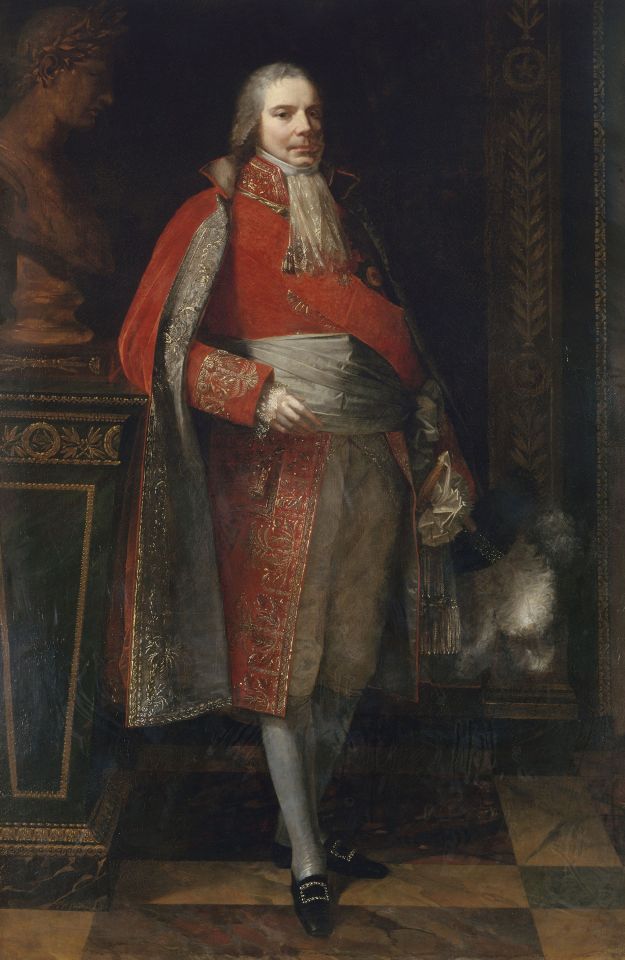
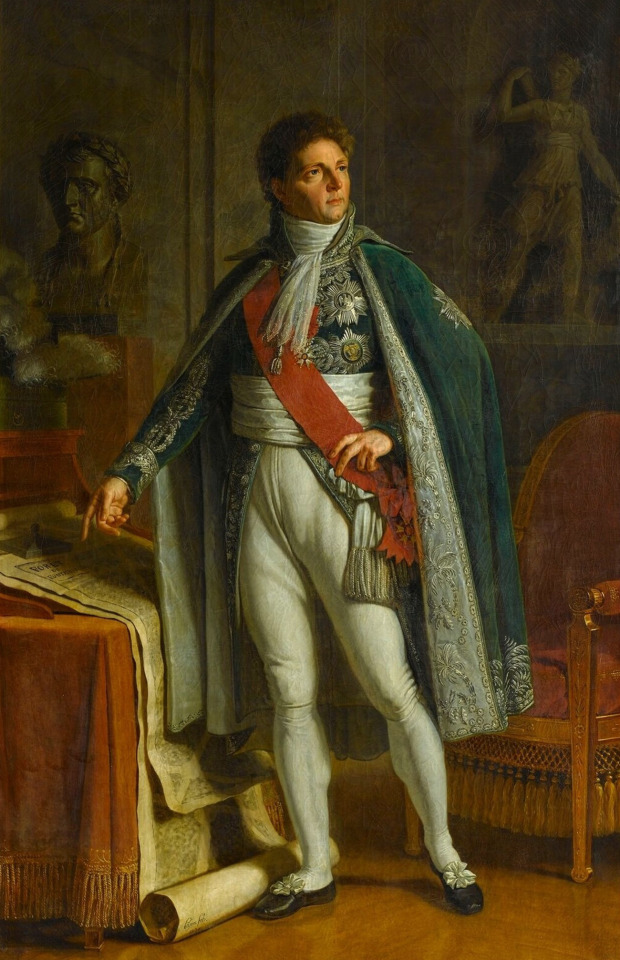
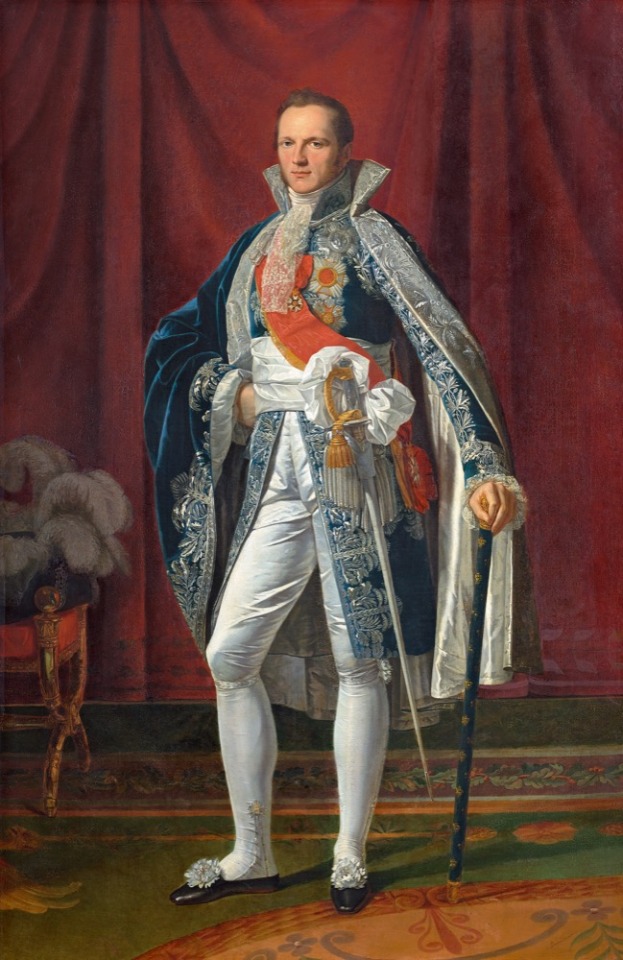

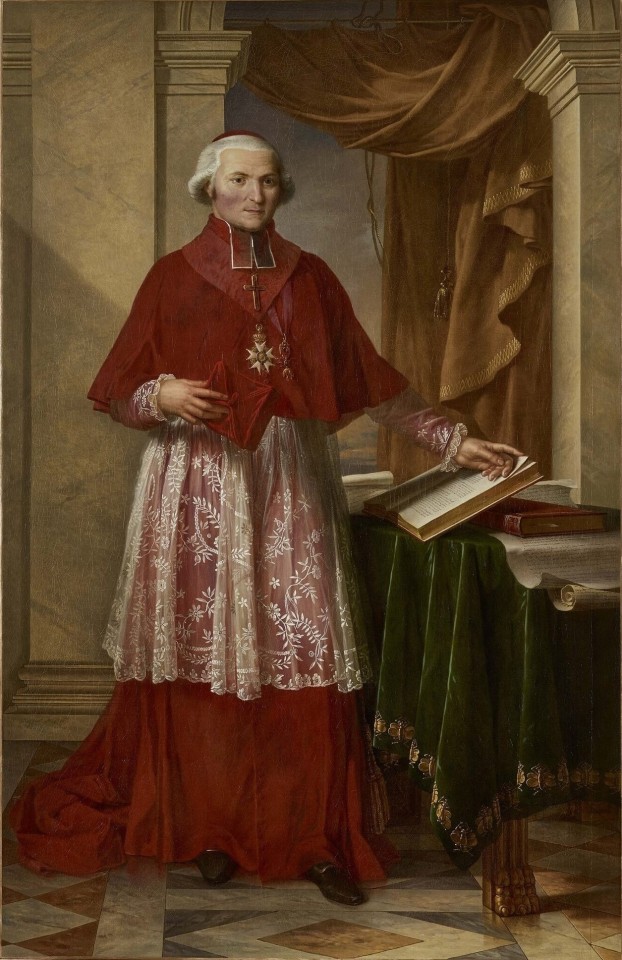

In 1806, Vivant Denon, the director of the Louvre, commissioned two series of portraits of state officials to be displayed in the imperial palaces. One set, intended for Fontainebleau, depicted the six grand officers of the Maison impériale��in court dress.
Grand chambellan: Charles-Maurice de Talleyrand Périgord, Prince de Bénévent - Pierre-Paul Prud’hon, 1807 (Musée Carnavalet)
Grand veneur: Louis-Alexandre Berthier, Prince de Neufchâtel et Wagram, maréchal de France - Jacques Augustin Catherine Pijou, 1808 (Palais de Versailles)
Grand écuyer: Armand de Caulaincourt, duc de VIcence, en habit de Grand écuyer - Féréol Bonnemaison, 1806 (private collection)
Grand maréchal: Maréchal Duroc, duc de Frioul, Grand Maréchal du palais de S.M. l’Empéreur Napoléon Ier - Antoine-Jean Gros, 1805 (Musée de beaux-arts de Nancy)
Grand aumonier: Joseph Fesch, cardinal - Charles Meynier, 1806 (Palais de Versailles)
Grand maître des cérémonies: Louis-Philippe de Ségur - Artist Unknown (Palais de Versailles) [Denon commissioned the official portrait of Ségur from Marie-Guillemine Benoist, but I can’t find it online anywhere (maybe it’s in a private collection?), so here’s another portrait of Ségur instead.]
88 notes
·
View notes
Photo






Castle’s Rock - 11 March 2018 The Château de Foix Foix, Ariège, France
The Château de Foix is a castle which dominates the town of Foix in the French département of Ariège. An important tourist site, it is known as a centre of the Cathars. It has been listed since 1840 as a monument historique by the French Ministry of Culture.
Built In the style of 7th-century fortification, the castle is known from 987. In 1002, it was mentioned in the will of Roger I, Count of Carcassonne, who bequeathed the fortress to his youngest child, Bernard. In effect, the family ruling over the region were installed here which allowed them to control access to the upper Ariège valley and to keep surveillance from this strategic point over the lower land, protected behind impregnable walls.
In 1034, the castle became capital of the County of Foix and played a decisive role in medieval military history. During the two following centuries, the castle was home to Counts with shining personalities who became the soul of the Occitan resistance during the crusade against the Albigensians. The county became a privileged refuge for persecuted Cathars.
The castle, often besieged (notably by Simon de Montfort in 1211 and 1212), resisted assault and was only taken once, in 1486, thanks to treachery during the war between two branches of the Foix family.
From the 14th century, the Counts of Foix spent less and less time in the uncomfortable castle, preferring the Governors' Palace (Palais des gouverneurs). From 1479, the Counts of Foix became Kings of Navarre and the last of them, made Henri IV of France, annexed his Pyrrenean lands to France.
As seat of the Governor of the Foix region from the 15th century, the castle continued to ensure the defence of the area, notably during the Wars of Religion. Alone of all the castles in the region, it was exempted from the destruction orders of Richelieu(1632-1638).
Until the Revolution, the fortress remained a garrison. Its life was brightened with grand receptions for its governors, including the Count of Tréville, captain of musketeers under Louis XIII and Marshal Philippe Henri de Ségur, one of Louis XVI's ministers. The Round Tower, built in the 15th century, is the most recent, the two square towers having been built before the 11th century. They served as a political and civil prison for four centuries until 1862.[2]
Since 1930, the castle has housed the collections of the Ariège départemental museum. Sections on prehistory, Gallo-Roman and mediaeval archaeology tell the history of Ariège from ancient times. Currently, the museum is rearranging exhibits to concentrate on the history of the castle site so as to recreate the life of Foix at the time of the Counts.
7 notes
·
View notes
Quote
Le mariage, on y rentre par la douceur, on en sort par la violence.
Louis-Philippe de Ségur
0 notes